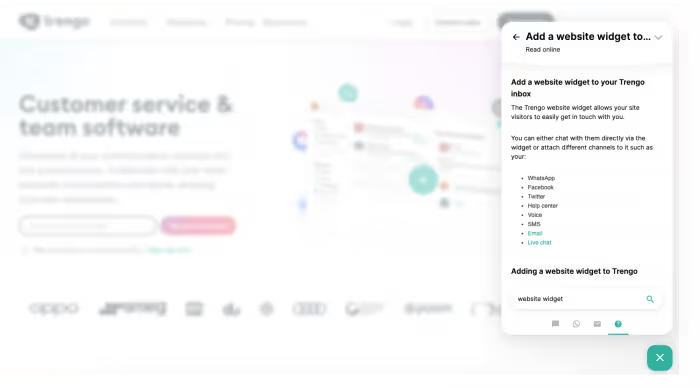Modern consumers use more communication channels than a rainbow has colors. I may work for a customer service platform, but even I struggle to keep up sometimes.
But whether we like it or not, it's essential for companies to keep up with these developments. If the world uses WhatsApp, you better be on WhatsApp. If customers like Facebook Messenger, you better offer it. If they want to protect their privacy on Telegram, you better... you get my point.
But how do you offer all of these communication channels on your website without turning it into a total mess? Well, with a multichannel live chat of course.
What is a multichannel live chat?
A multichannel live chat allows visitors to pick their favorite communication channel to chat with your customer service team, such as WhatsApp or Facebook Messenger. Check out the screenshot of the multichannel live chat widget on our own website below.

The buttons on the bottom of the widget allow our website visitors to pick our regular live chat, WhatsApp, email, or open our Help Center.
The benefits of offering a multichannel live chat
Here are the most important benefits of putting a multichannel live chat on your website:
Cater to your customers' preferences
This may be an obvious point, but that doesn't mean it's not true. Modern consumers simply like to be able to pick and choose how they want to be in contact with you. They may feel like WhatsApp today, coming by your store tomorrow, and picking up the phone the day after. And if that's how they feel, there's no choice but to follow them.
Keep an overview of all your channels
If you want to put a multichannel live chat on your website, you will need to use a customer service platform. Here, you'll be able to manage all your incoming conversations on one screen. That's right, all your regular live chats, WhatsApp messages, Facebook messages, and so on in one pretty little view.
This means your customer service team gets to step out of their fight or flight mode and calmly answer customer questions. No more clicking back and forth. 🎉
More time to answer questions
If a customer reaches out to you via your regular live chat, the conversation ends whenever they navigate to another website. They may have left their email address for you, but they didn't want an email conversation, they wanted to live chat.
However, like anybody, sometimes you are just too busy to reply to messages right away. It happens to the best of us. That's why when a customer reaches out via WhatsApp or Facebook Messenger instead, you get a little more room to breathe. Even if they navigate to another website, you can send them a message that they'll still receive.
Relieve pressure from your customer service team
My favorite part about a multichannel live chat is the fact that you can also link to your help center articles. Why? Because many people - especially from younger generations - don't really want help. They want to help themselves.

When a visitor clicks on your live chat, it's often their last resort before navigating back to Google and try your competitor. But finding your help center with answers to the most frequently asked questions may just be the antidote to keep them right where they are.
How to set up a multichannel live chat
In order to put a multichannel live chat on your website, you'll have to use the right software solution. In a customer service platform like Trengo, you can easily set up a live chat with the following communication channels:
- Voice
- SMS
- Regular live chat
Besides that, you can also add a Help Center to your live chat widget. This gives your visitors the option to go and find answers to their questions all by themselves.




.png)











